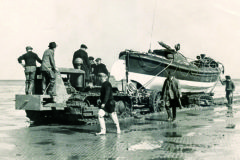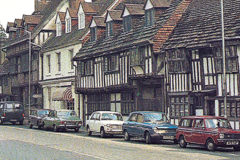Classic heavy-haulage trucks
Posted by Chris Graham on 9th June 2021
Peter Simpson tells the story of a pair of classic heavy-haulage trucks, how one still works today and their famous operator.
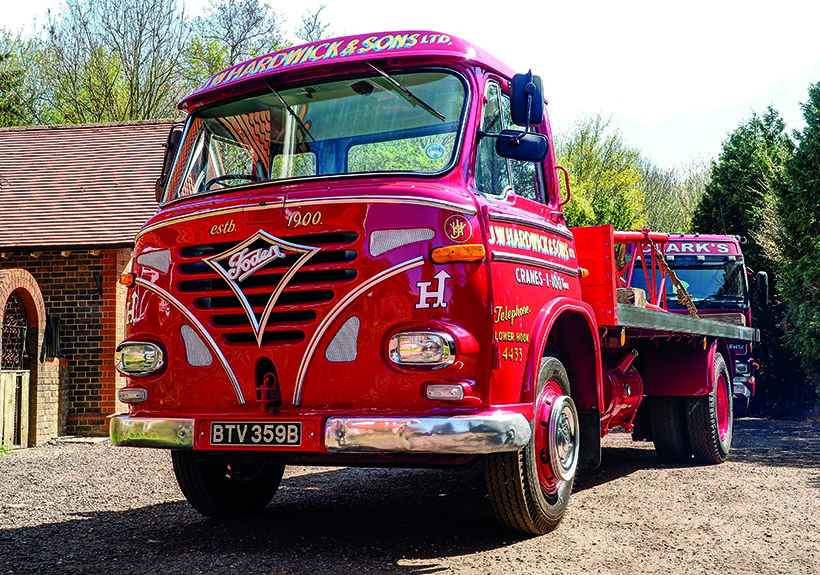
Classic heavy-haulage trucks.
Down by Gatwick Airport, Darren Clark is continuing a business which can trace its roots back to the 1870s. He’s also the proud owner of two fine Fodens and, while one’s in preservation as a tribute to his famous grandfather, the other is very definitely a working vehicle.
Should you have the misfortune to break down while driving a heavy vehicle on the M23 – or anywhere else in the immediate vicinity – then there’s a chance your recovery will be courtesy of a rather special, and historically significant, Foden 4000. What’s more, said Foden is now owned and operated by the fifth generation of a family that can trace its heritage in the transport industry back to at least 1900.
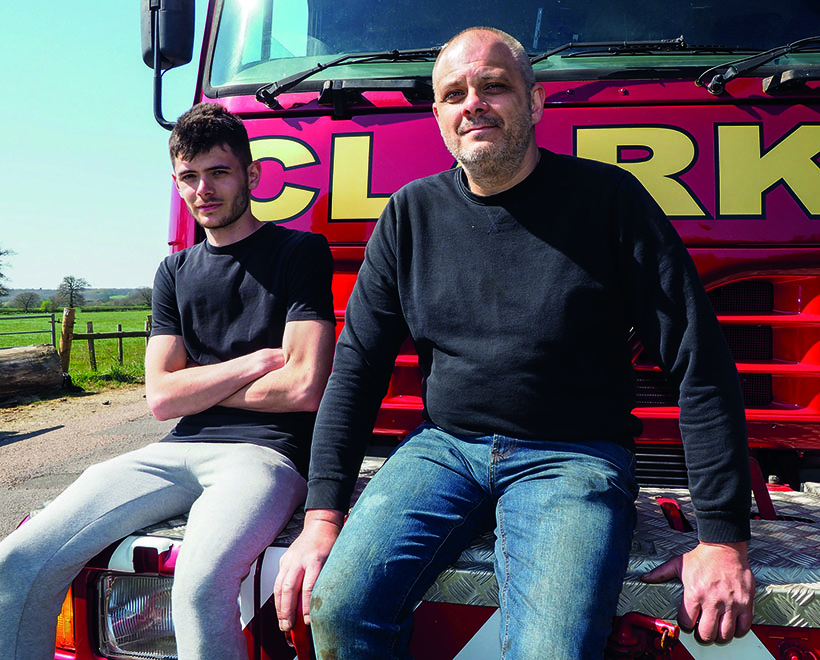
Daniel and Darren Clark; the fifth and sixth generations of the family to work in road haulage.
Long history
Darren Clark’s family history in ‘lorries’ covers pretty-much all aspects; motor, haulage, cranes, recovery, scrap and heavy-haulage. The earliest reference Darren has found so far is to his great, great grandfather Edward Hardwick being recorded as a ‘Carman Carrier’, and operating from The Barnyard, Mill Street, Kingston-upon-Thames, in 1879. That’s four years before Karl Benz patented the first internal combustion-engined motor car. The earliest verified official reference to a business, however, comes in 1900.
In due course, the business was taken over by Edward’s son, Jack, and became JW Hardwick & Son – a name that will be very familiar indeed to older readers! They may well recall rows of redundant, steam-powered vehicles in the famous yard at Cox Lane, Ewell, awaiting resale or, more likely, sale for scrap.
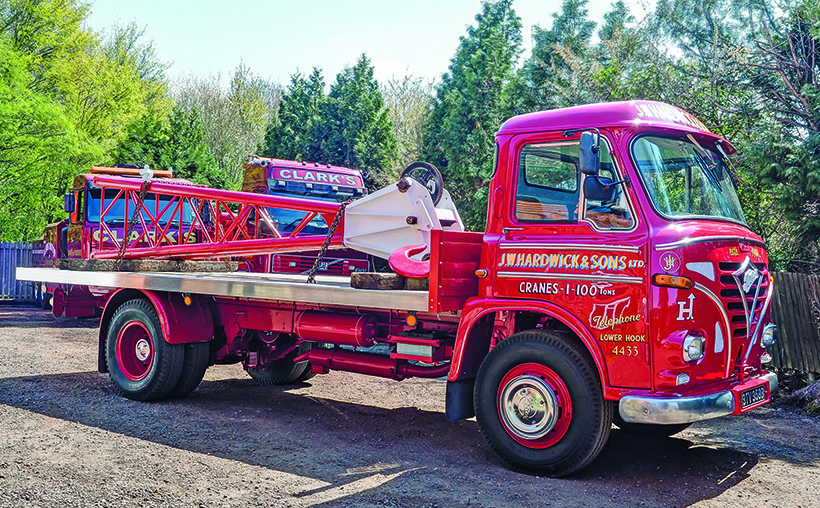
JW Hardwick moved to Ewell from Surbiton in 1931 and, as well as trading in vehicles, Jack also became involved in heavy-haulage, salvage and heavy towing/recovery work, as well as crane hire.
The immediate post-war era was extremely lucrative for JW Hardwick. In particular, the crane hire side flourished, as London and the South East was rebuilt and modernised following the effects of wartime bombing. The scrap side was also busy, with the move away from steam to internal combustion power, and many early steam enthusiasts bought engines to restore from Cox Lane.
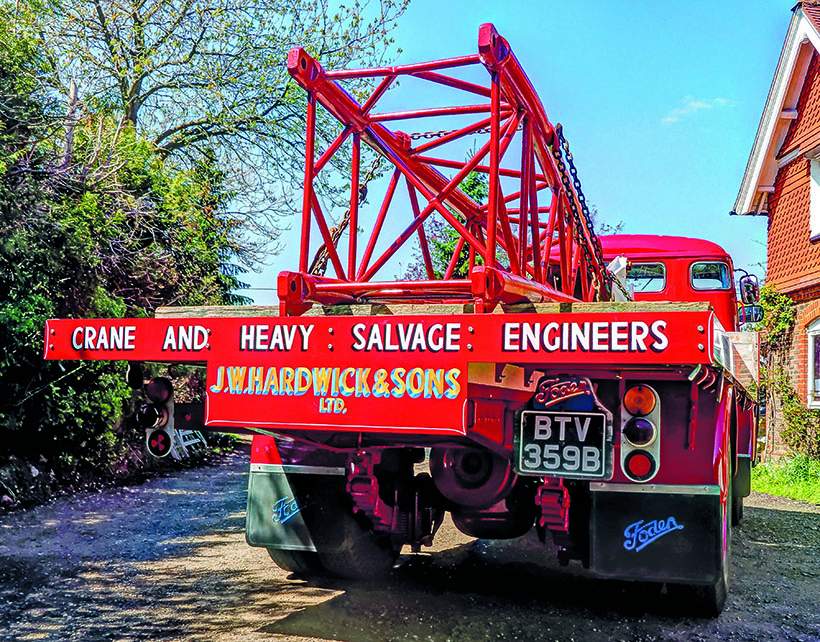
A preservation pioneer
In 1959, Jack imported a massive Lorain MC875 mobile crane from America – said to be the world’s largest at the time. However, changes within the crane hire industry led to a significant reduction in hire rates from the mid-1960s and, towards the end of the decade, the crane fleet was sold. From about the same time, Jack started to assemble a significant collection of vintage vehicles; he was one of the pioneers of commercial vehicle preservation in the UK, and the Hardwick name became well-known within the movement. His vehicles were also seen regularly on early London to Brighton runs.
Jack died in 1988, just as Darren was leaving school, and the family decided to gradually sell-off the vintage vehicle collection and the properties. Perhaps unsurprisingly given its London suburbs location, the Cox Lane site is now housing, though in a kind gesture to its past history, the most recent part to be developed bears the name Hardwick Close.
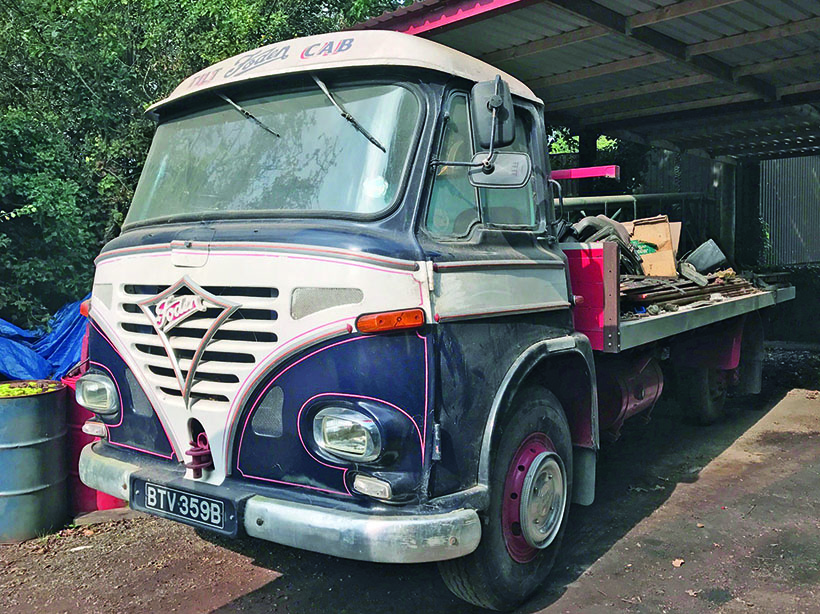
The S24 as purchased. A bit tired-looking, perhaps, but not at all bad overall.
At this point, we need to bring Darren’s dad into the story and, again, it’s a name that’ll be familiar to many – step forward Mick Clark, long-term HCVS trustee, committee member and enthusiast, whose various lorries have been featured in CVC many times in the past. After serving his commercial mechanic apprenticeship with long-established Bedford truck dealership, Bakers of Redhill, Darren went to work for his Dad who, at that point, was still running his own haulage business. Initially, Darren worked mainly as a fitter/mechanic but, as soon as he turned 21, he took his Class 1 HGV test, so was also able to spend time driving.
Family continuation business
The present Clark Motor Engineering business – a continuation of the heavy-salvage and recovery sides of the JW Hardwick business, was started in 2009. With a main base near Gatwick Airport, and a secondary location close to the A3, at Tolworth Junction, Clark Motor Engineering provide heavy-recovery and rescue services for, according to Darren, “most of the truck, bus and coach operators in the area.”
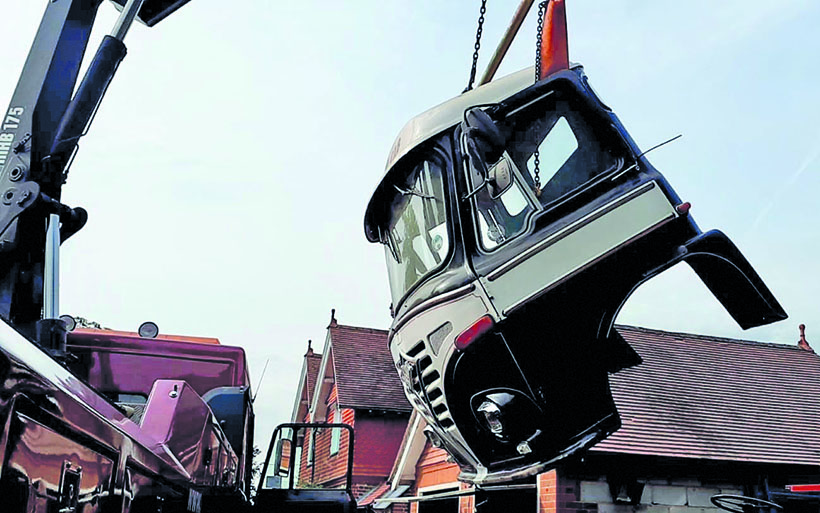
A tilting cab becomes a flying cab, as the strip-down commences.
The operational fleet comprises three, heavy-recovery vehicles (DAF XF 60-tonne train weight, Foden 4000 65-tonne and an 80-tonne towing weight Volvo), along with two breakdown vans, an artic recovery vehicle and, for really-hard-to-reach jobs, an off-roader. The company also provides 24-hour/365-day cover, and can go anywhere in the country if needed.
More recently, Darren’s eldest son, Daniel (who, like Dad, has been involved informally with the family business since he was about four years old), has joined it full-time, having studied mechanical engineering at Surrey College. For those who want to know more, there are Facebook groups at www.facebook.com/clarkmotoreng and, for a more historic perspective, www.Facebook.com/jwhardwicks
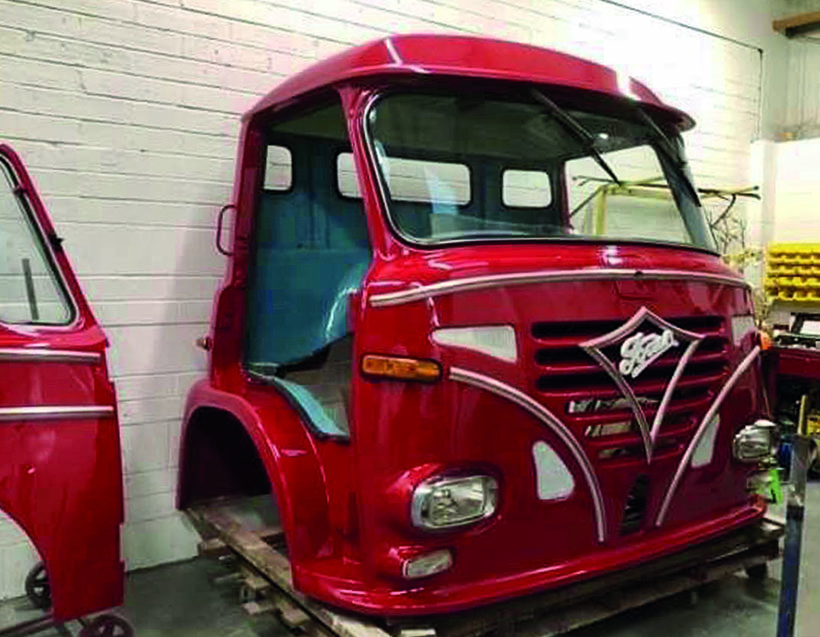
The cab after painting. The wooden frame required significant repairs.
The S24
Unsurprisingly, given this heritage, Darren is very interested in the vintage/restoration side of things. We were actually invited to Gatwick to see his newly-restored 1964 Foden S24 BTV 359B. It’s a two-stroke, with a Foden FD4 Mk6 four-cylinder, 120hp engine and Foden five-speed gearbox. New to Shipstone’s Brewery in Nottingham, it’s been in preservation for some years, with a number of owners, and has been seen in a number of different guises. Darren bought it “from a local chap” in 2015.
The engine had been rebuilt a couple of years earlier by Seb Marshall (son of Prince, another well-known preservation pioneer, albeit mainly of buses), and the S24 was, generally-speaking, an older restoration which appeared to be in fair condition, albeit with a not-particularly-nice, cut-down, curtain-sider body.

Coming back together. The cab interior came up very well.
The lorry was dismantled down to a rolling chassis, though the running gear was generally in good order and needed little more than the usual cleaning up, servicing and adjustment. Correct-pattern 9.00×20 tyres and split-rim wheels were, however, fitted in place of the tubeless wheels and tyres that the S24 arrived with. The engine was also treated to a new set of injectors.
The cab frame needed some work, in the form of new wood for the door and main A pillars (replacements for which came with it) plus localised remedial/repair work elsewhere. Darren points out that people often assume that a Foden glassfibre cab eliminates rot problems whereas, in fact, they tend to sweat, which causes a wooden frame to rot, or a metal one to rust.
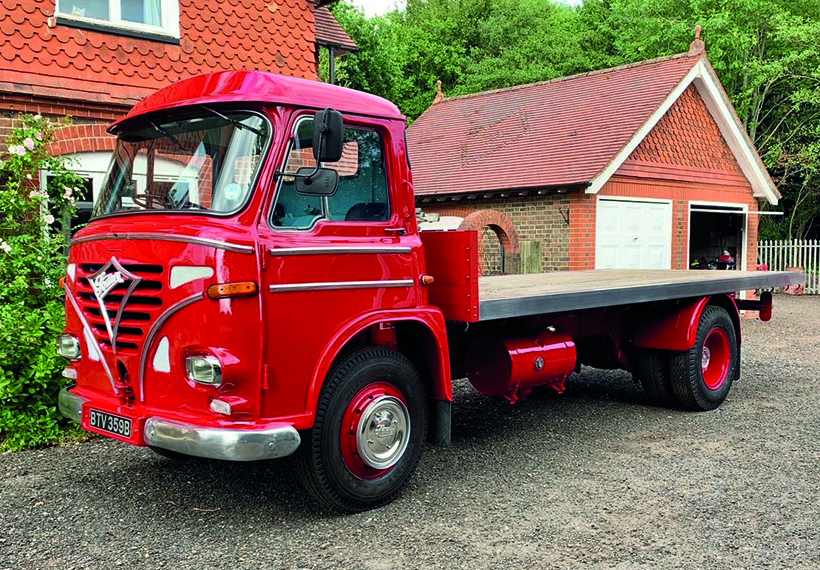
Nearly finished; awaiting only the sign-writing and some final fettling.
Nothing was needed inside the cab beyond a clean-up. The chassis was painted by a local chap named Gary McCulloch, who did an excellent job, while the signwriting was by Ashington-based Harvey Harris (from the well-known fairground family) who, though only in his 20s, did a first-class job. It’s been finished in Darren’s grandfather’s livery, and sign-written for the crane hire/operation side of the JW Hardwick business.
That just left the body. Here, Darren and co-designed and constructed a new one, in period with the lorry, using aluminium framing and keruing planking for the base. Part of a period crane has also been added, to create a ‘load’.
Working Foden
While the S24 is, quite unashamedly, a preserved vehicle, Darren’s other Foden is very much part of the working fleet. Bearing chassis number 451373, the 2000 4000 S106R is, Darren believes, the last Foden to have been built at Sandbach, before production switched to Leyland for the Alpha range. The last proper Foden then? In fairness, we should perhaps point out that another 4000 (extant and living in Cambridgeshire), was given this title by the factory, and was the subject of a ceremonial handover at the factory.
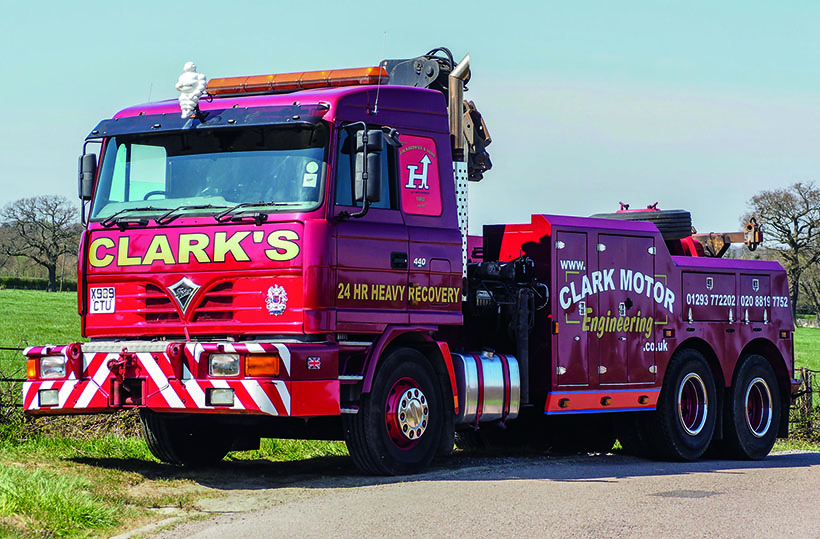
The working Foden, the 4000.
This one, however, has a chassis number two digits higher. It was also built for the MoD, to its specific specification, and Darren suspects it was a case of the MoD simply not wanting its purchase to be publicised, and Foden giving someone else the official accolade.
Anyway, Darren’s 4000 is/was a massively high-specification vehicle, and was built especially to work at the rocket base on the isle of Benbecula, in the Outer Hebrides. That spec includes a double-thickness chassis frame all-through, from the back to the protruding front, which houses a 12-tonne Rotzler self-recovery winch. On the rear, there’s an EKA/Boniface, 25-tonne underlift plus a huge, Rotzler, 35-tonne winch. Power comes from a Cummins 440hp engine, powering through an Eaton 16-speed gearbox and Rockwell double-drive rear bogie mounted on rubber.
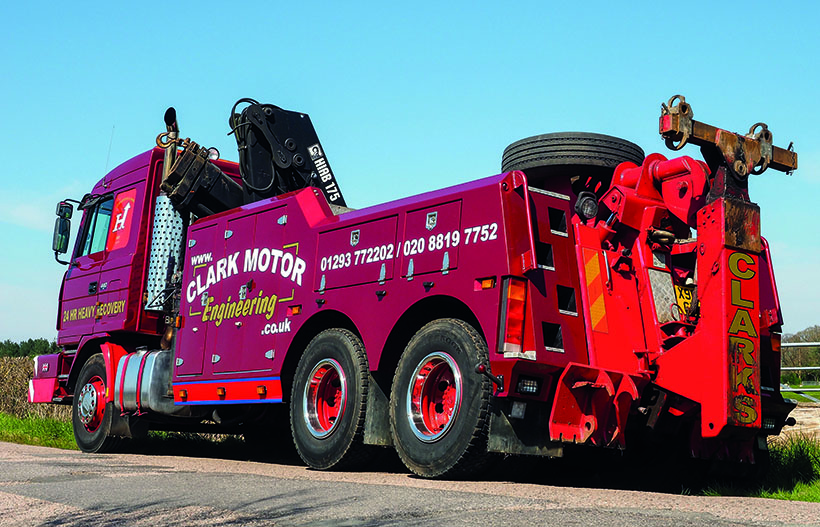
Though built for the MoD, the 4000 was actually owned by Serco and, as was and is quite common with high-cost vehicles, was leased to the MoD, rather than owned outright. Figures are unconfirmed, but a build-cost of around £300,000 – and a lease cost of £1,000 a week – have been suggested.
Long-term target
As to how it came to Surrey, well Darren says: “We knew of the vehicle, and always had it in mind to buy when we could.” That happened when the 15-year lease expired, in 2015. The Foden had hardly been used during its time on the Island; it had just 6,000km on the clock, and was still like new, mechanically. However, standing around in the Hebridean climate for 15 years hadn’t done the bodywork any favours and, while the chassis/cab was still perfect, the pannier-type body was very rusty. It had to be removed and the rusty metal cut and replaced with fresh.

As bought with just 6000km on the clock but, after 15 year’s exposure to Outer Hebrides weather, the 4000’s bodywork had suffered.
The MoD-specified Hiab was also very rusty and, in any case, it wasn’t really big enough for the 4000’s new role in civvy street, so a larger replacement was fitted. The 4000 was then refinished in Clark livery, before being put to work in 2017.
The 4000 is now used pretty-much every day on a variety of recovery jobs. According to Darren it: “Drives like a new truck, and can handle absolutely anything.” This includes batch concrete mixers which, apparently, are usually something of a problem for recovery operators, as they’re often overweight. The Foden, however, tackles them with ease. Economy, too, is actually better than you might expect for a lorry like this. En route to a job ‘empty’, it returns about 10mpg. Towing a load back drops this to around 7mpg but, compared to some heavy recovery vehicles which almost measure consumption in gallons per mile, those aren’t bad figures at all. The engine programming has, apparently, been tweaked slightly by “an ex-Cummins guy,” to suit the lorry’s current role.
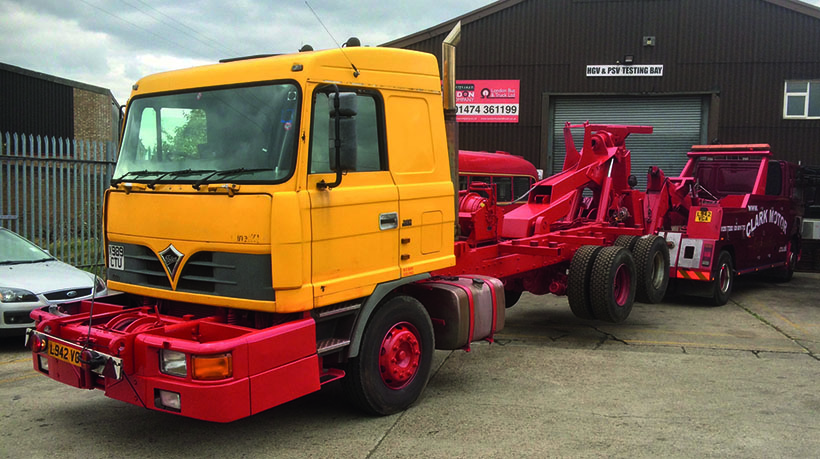
Body off; the main chassis-cab unit was still in excellent condition.
So, there we have it. The famous Hardwick yard in Ewell may have gone for good under a sea of modern, nondescript housing, but the tradition and heritage of the business that was behind it, lives on!

The locker bodywork was corroded extensively, and lots of rot had to be cut out…
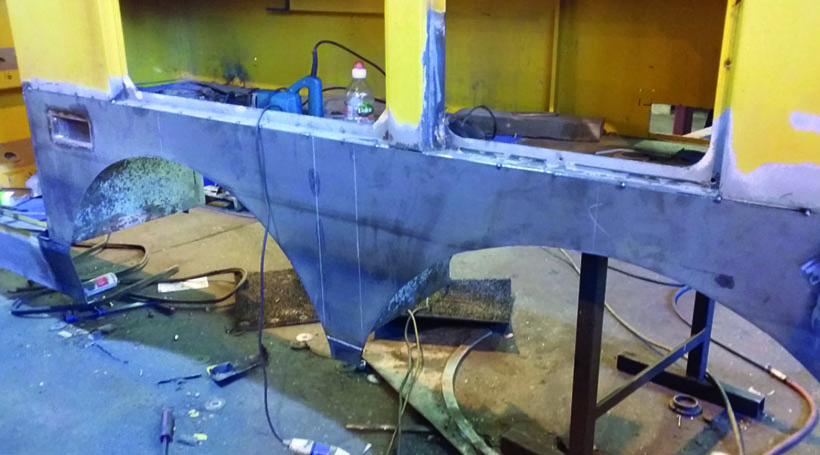
… and then replaced with new metal.
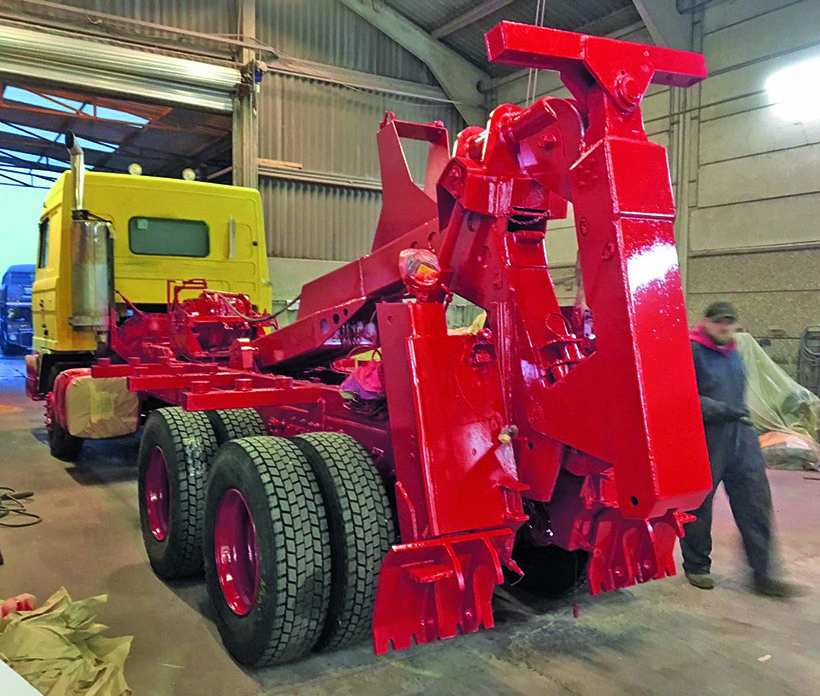
A larger replacement Hiab was also needed for the Foden’s new line of work.
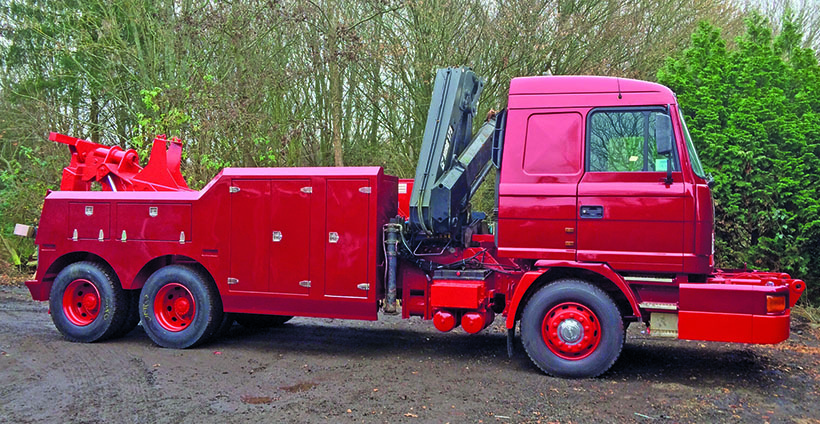
The new look begins to emerge!
For a money-saving subscription to Classic & Vintage Commercials magazine, simply click here



